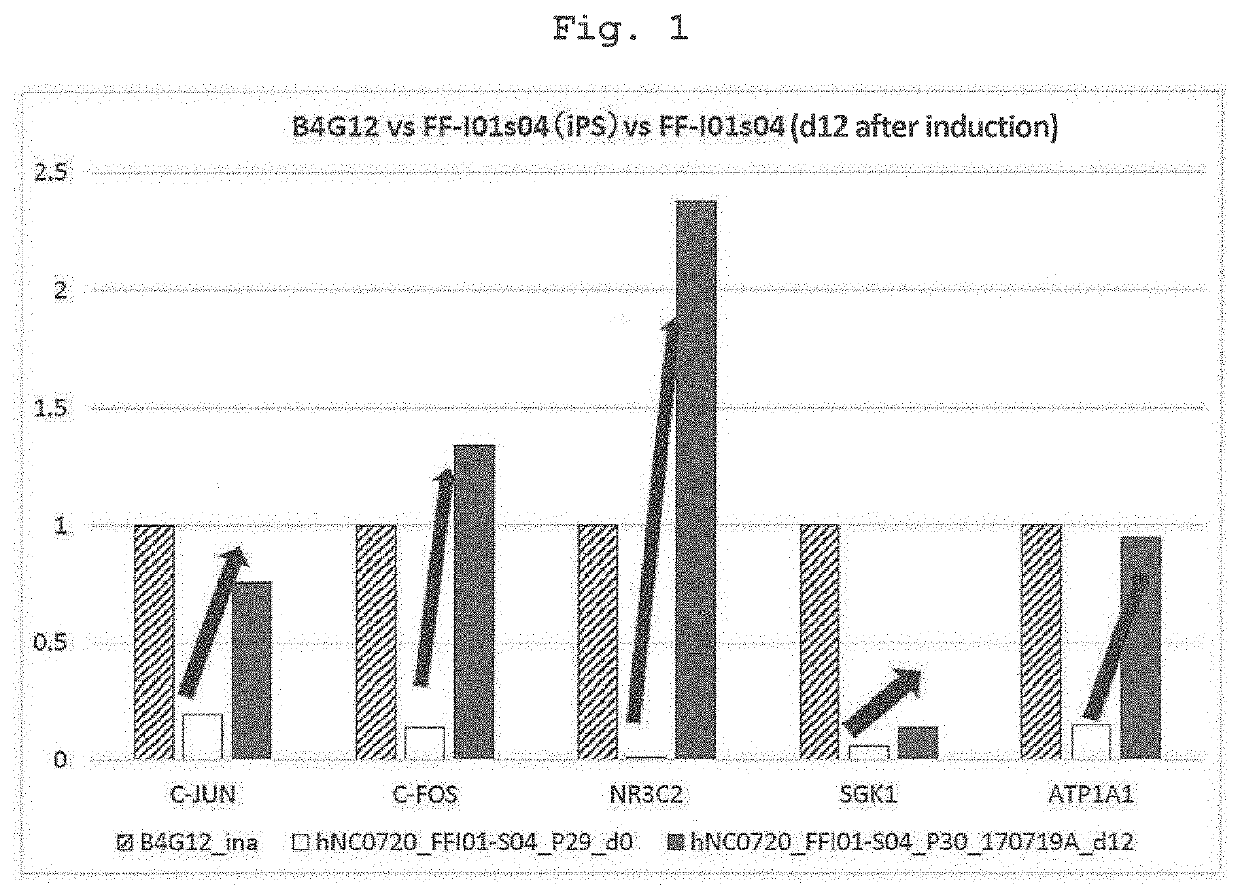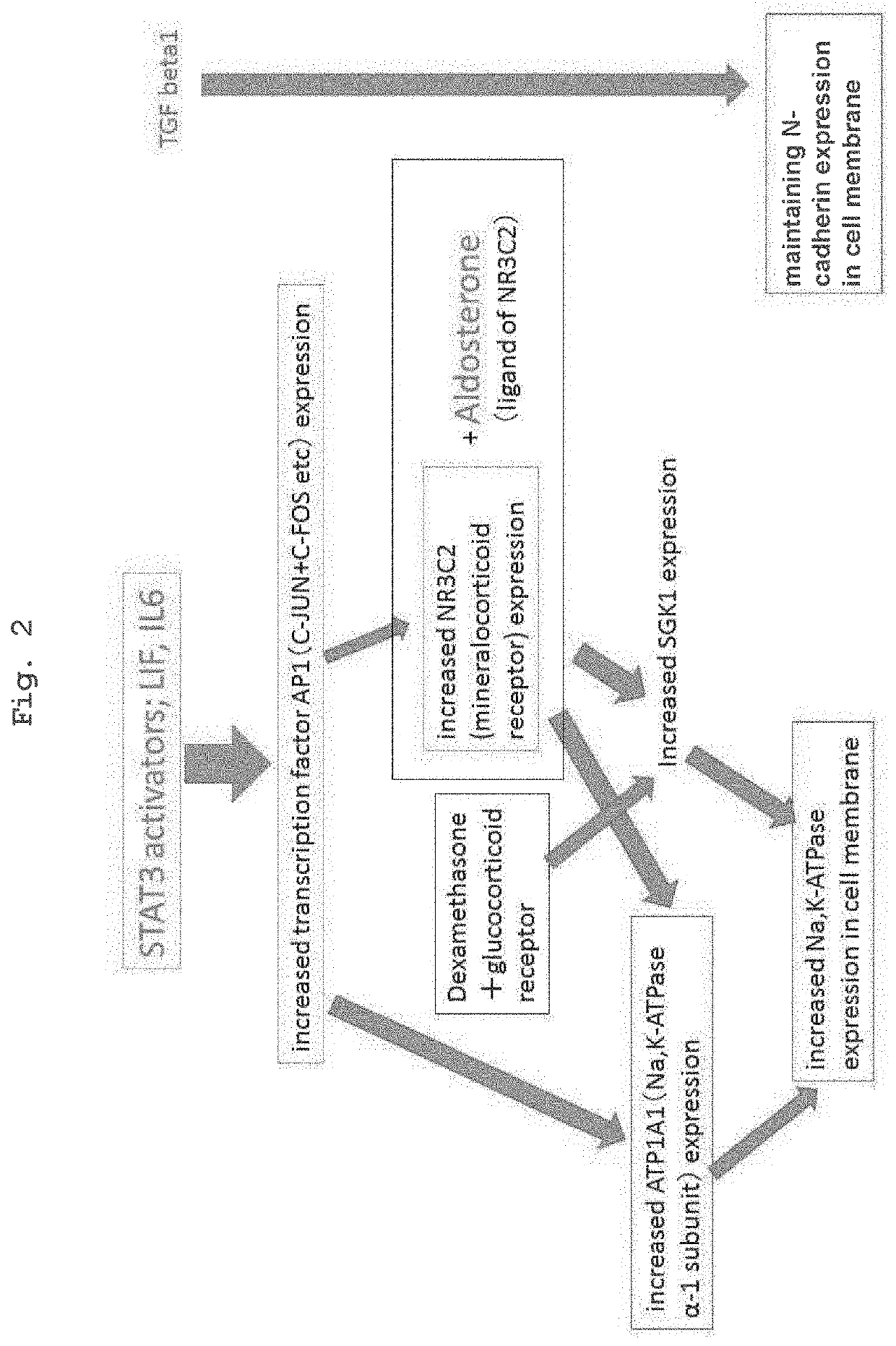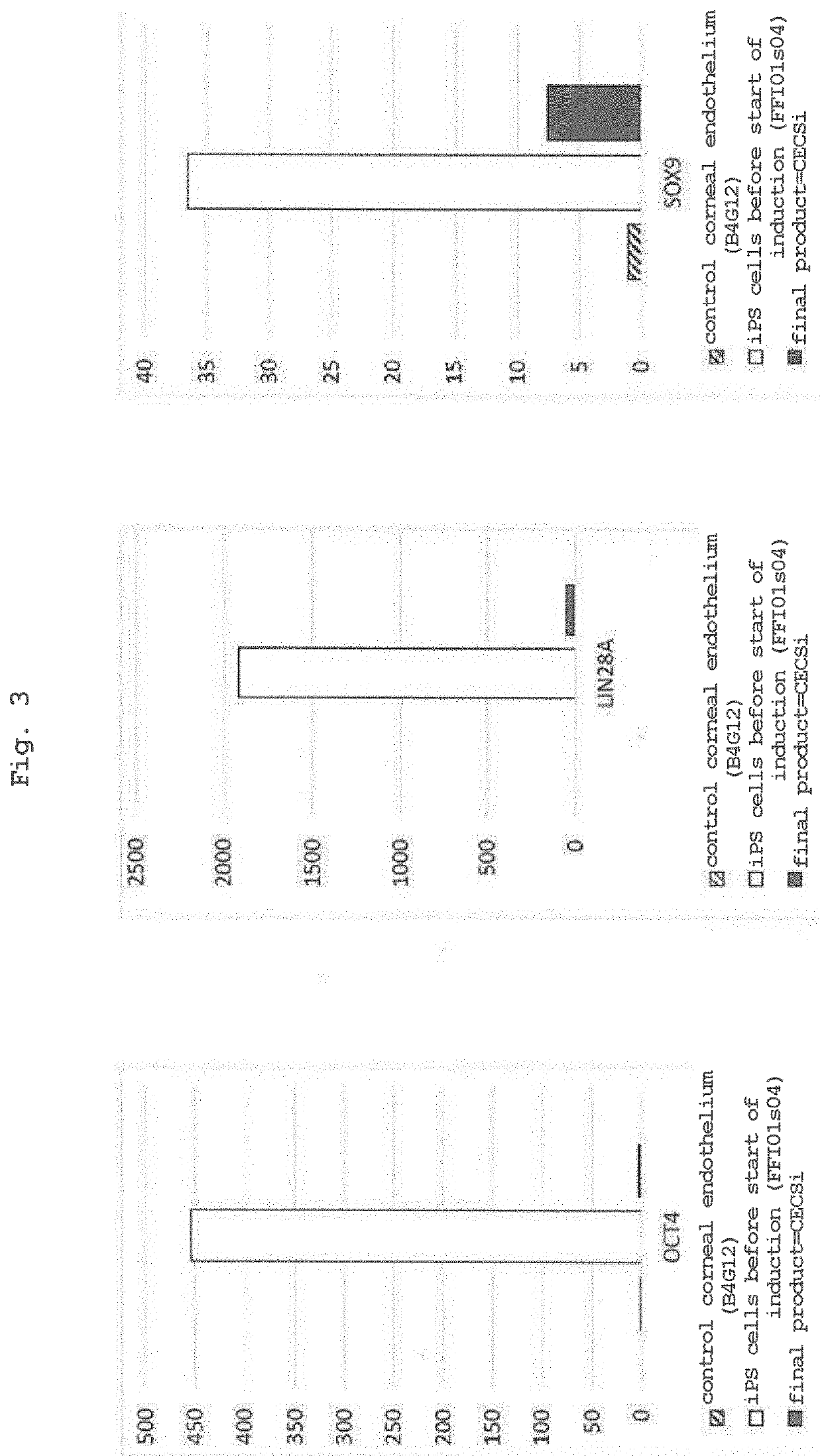METHOD FOR DERIVING CORNEAL ENDOTHELIUM REPLACEMENT CELLS FROM iPS CELLS
- Summary
- Abstract
- Description
- Claims
- Application Information
AI Technical Summary
Benefits of technology
Problems solved by technology
Method used
Image
Examples
example 1
e in Gene Expression Between iPS Cell-Derived Neural Crest Cell and Human Corneal Endothelium by DNA Microarray
[0082]Using two kinds of cells of (a) genuine human corneal endothelial cells collected from the cornea for overseas donor research and (b) iPS cell-derived neural crest cells (iPS-NCC) induced from iPS cell (FF-I01s01 line; the Center for iPS Cell Research and Application, Kyoto University) by a modified method of the neural crest cell induction method of a previous report (Bajpai et al., Nature. 2010 Feb. 18; 463(7283):958-62), Agilent Technology DNA microarray analysis was outsourced to Hokkaido System Science Co., Ltd., and gene expression profiles were compared by DNA microarray. iPS-NCC (also indicated as iNCC) was confirmed by the expression of neural crest cell markers P75NTR and CD49D. It was newly found that corneal endothelial cells highly express KGF, IGF2, LIF, and IL6 (Tables 2-1, 2-2). It was also found that AP1 (C-FOS+C-JUN), which is considered to be locate...
example 2
n of ATP1A1, ZO-1, N-Cadherin and PITX2 11 Days after CECSi Cell Induction
[0093]According to the induction protocol used in Example 1, iPS cells (FF-I01s04 line) were induced to differentiate. The expression of ATP1A1, ZO-1, N-cadherin and PITX2 was examined using cells on day 11 from the differentiation induction.
[0094]CECSi cells on a 35 mm dish were fixed with ice-cooled 4% paraformaldehyde after removing the medium. After washing the dish twice with PBS, a blocking solution (PBST containing 10% Normal Donkey Serum (10% NDS / PBST)) was added and blocking was performed for 30 min. Then, the primary antibody reaction was performed at room temperature for 1 hr with the following antibody amounts.
(i) ZO1, Na,K,ATPase α1 double staining
Rabbit anti human ZO-1; Invitrogen, 40-2200, 1:500, 1.5 μL / dish
Mouse anti human Na,K-ATPase α1; Novus, NB300-146, 1:500, 1.5 μL / dish
blocking solution (10% NDS / PBST), 0.75 mL / dish
(ii) N-cadherin, PITX2 double staining
Rabbit anti human PITX...
example 3
n of Induction Efficiency into CECSi Cells
(Verification by FACS)
[0099]Furthermore, induction efficiency was quantitatively evaluated by performing flow cytometry using integrin alpha-3 (CD49c) expressed on corneal endothelial cells as a surface antigen.
[0100]After collecting CECSi cells on 10 cm dish with Accutase, the cells were washed by adding HESS and centrifuging and discarding the supernatant. After suspending the cells in HBSS, 2 μL of each of the following antibody reagents was added to 1×106 cells / 100 μL of cell suspension.
PE anti-human CD49c, BioLegend #343803
PE anti-human CD49d, Biolegend #304304
[0101]Alternatively, 2 μL of rBC2LCN-FITC (Wako Pure Chemical Industries, Ltd. #80-02991) was added. The antibody reaction was performed at room temperature for 1 hr.
[0102]The cells were washed by adding HBSS and centrifuging and discarding the supernatant, and flow cytometry was performed using SH800 manufactured by SONY.
[0103]The results are shown in FIG. 6. The ...
PUM
 Login to View More
Login to View More Abstract
Description
Claims
Application Information
 Login to View More
Login to View More - R&D
- Intellectual Property
- Life Sciences
- Materials
- Tech Scout
- Unparalleled Data Quality
- Higher Quality Content
- 60% Fewer Hallucinations
Browse by: Latest US Patents, China's latest patents, Technical Efficacy Thesaurus, Application Domain, Technology Topic, Popular Technical Reports.
© 2025 PatSnap. All rights reserved.Legal|Privacy policy|Modern Slavery Act Transparency Statement|Sitemap|About US| Contact US: help@patsnap.com



